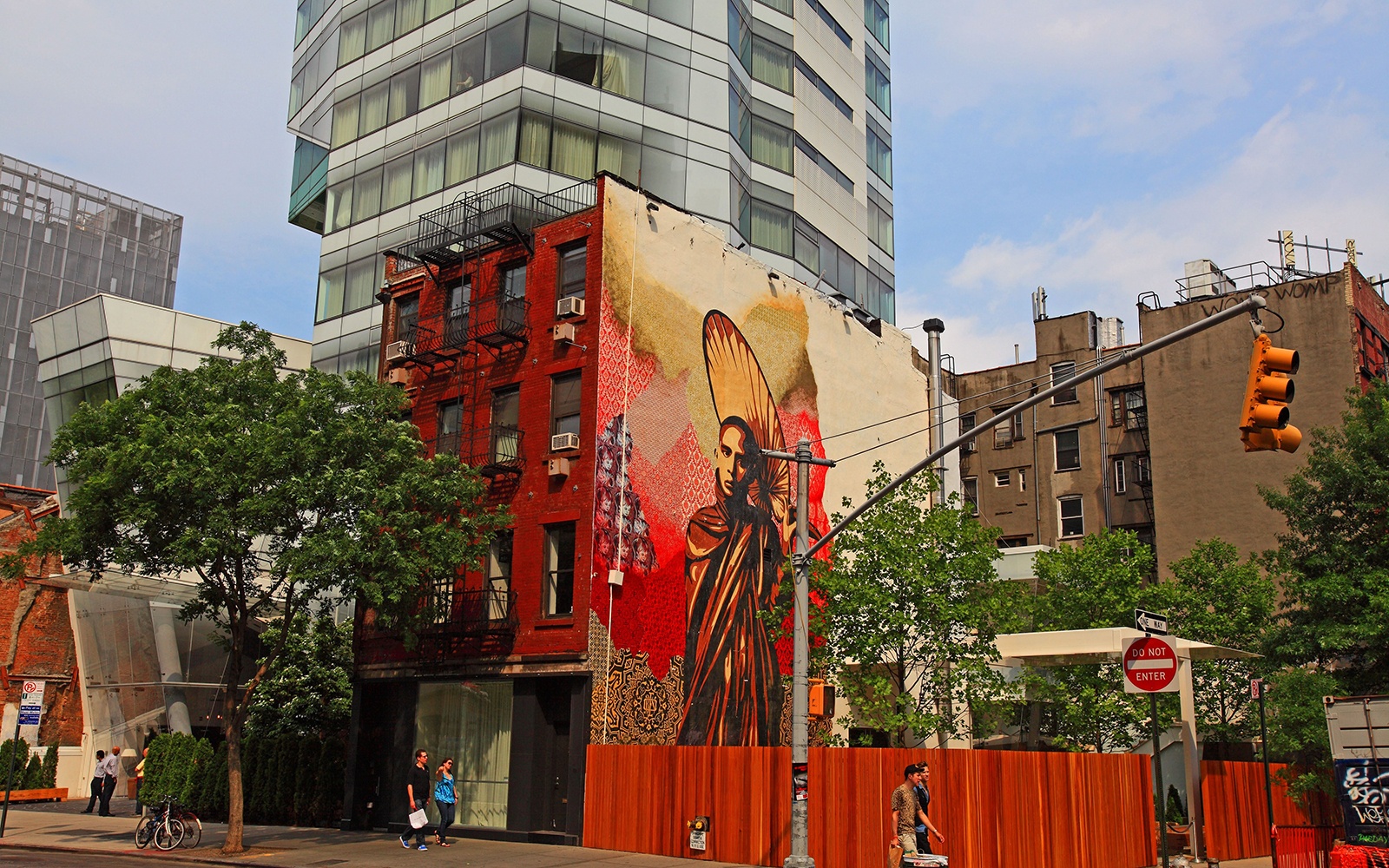 © Allan Montaine / Alamy
© Allan Montaine / Alamy
I still remember the thrill of walking into the old Max Fish when I first moved to New York in 2007. The Ludlow Street indie rock bar was one of the last remaining holdouts of a fabled era on the Lower East Side, one marked by edgy music venues, Velvet Underground burnouts, and downtown hipsters before hipster was a look sold in SoHo retail windows. Heaps of trash and roving dope dealers still gave the block an authenticity that was under siege from frat bros and cheesy lounges—hallmarks of the modern LES. Inside, Max Fish was far removed from its '90s heyday, but vestiges of its bohemian glory remained, like the legendary jukebox and graffitied bathrooms. It smelled of stale beer, cigarettes, and sweat. It was gritty. It was perfect.
That memory comes to me as I’m sipping a Japanese whiskey-based Grand Prix on a leather banquet in the lobby of the Ludlow Hotel, Sean MacPherson’s buzzworthy opening across from Katz Delicatessen. A Ron Gorchov painting sits over a limestone fireplace; there are Moroccan rugs, grand chandeliers, and dapper LES gatecrashers sampling elixirs by barman Thomas Waugh, who made a name for himself shaking drinks at ZZ’s Clam Bar.
MacPherson has blazed a nightlife trail across lower Manhattan with his scene-setting debuts, from the celeb-magnet Jane along the West Side Highway, to the Marlton, a fashion-world darling in Greenwich Village, to the Bowery Hotel, where East Village subculture found a late-night clubhouse. He seems to have a knack for finding enclaves on the cusp and his timing this go-round couldn’t be more precise. Once the Lower East Side’s baddest block, the street is now a polished reproduction of something you’d find in the new Brooklyn. In the Ludlow, MacPherson hopes to keep some of the neighborhood’s character alive.
“As an impressionable kid from Malibu, I was smitten by the intense urbanity and diversity of the '80s LES. On one hand, it was a bit dangerous. On the other hand, the rents were affordable and it was an exceedingly fertile place for creativity—music, street art, and fashion oozed from its pores,” he says.
Gentrification is a polarizing word. But it’s hard to argue with MacPherson’s vision once you step inside the formerly abandoned brick space, which took six years to finish. The 184 loftlike rooms have dark hardwood floors, marble mosaic bathrooms with Hollywood-style vanity mirrors, and Brooklyn Bridge views; design elements such as petrified tree trunk stands and sheepskin throws are a nod to the area’s ubiquitous vintage shops.
The result? The cool crowd is moving in. Call it phase three of the Lower East Side’s evolution, from antiestablishment refuge to pukey Millennial circus to the startup set’s new frontier.
“I look at the loss of old New York rather wistfully, yet the city is a living organism that’s constantly evolving: it always has and always will reinvent itself,” MacPherson says.
This is what reinvention looks like: A corridor that was once home to no-frills joints like Banjo Jims and Motor City Bar now houses Sweet Chick, a Brooklyn-born canteen with bacon-and-cheddar waffles and duck ragu; the Ludlow Inn, a subterranean craft cocktail den from the team behind East Village favorite Angel’s Share; an outpost of comfort-food Mecca Pies N’ Thighs; Galli, the second location of Mercer Street’s beloved Italian trattoria; Rising States, a mod women’s boutique that showcases local designers; 179 Ludlow, a new luxury condo building once dubbed the ‘Rat Castle’ after it fell into disrepair; and the latest edition of the club-as-hotel Soho House, set to open in 2015.
September’s launch of Ludlow Hotel’s restaurant Dirty French, the latest from cult restaurateurs Rich Torrisi and Mario Carbone, amplified the cool quotient—it’s already one of the city’s hardest reservations—with tableside oyster service and a two-course chicken dish that’s on the vanguard of the city’s current obsession with roasted bird.
Ravi Patel kick-started Ludlow Street’s metamorphoses with his retro rooftop restaurant Hotel Chantelle in 2011, betting that the neighborhood was ripe for change.
“Before we built Hotel Chantelle, nobody passed Delancey—it was like the Berlin Wall,” Patel says of the thoroughfare that bisects Ludlow Street. “People thought it was sketchy but once we opened, they showed a willingness to try something new.”
And while he welcomes the upscaling from a business standpoint, he thinks the LES can still retain its edge despite a new coat of gloss.
“The coolness/uniqueness factor has lost its luster a little, but the Lower East Side is still going to have its grunge—now it’s just a sophisticated grunge. The neighborhood will never lose its character because it was founded on the culture that existed before all of these new developments. It’s not the new Meatpacking because the Meatpacking had no culture—it was all warehouses. The LES is more of a high-end Williamsburg.”
For better or for worse, what could be a better model for urban renewal than that?
Nate Storey is an editorial assistant at Travel + Leisure.